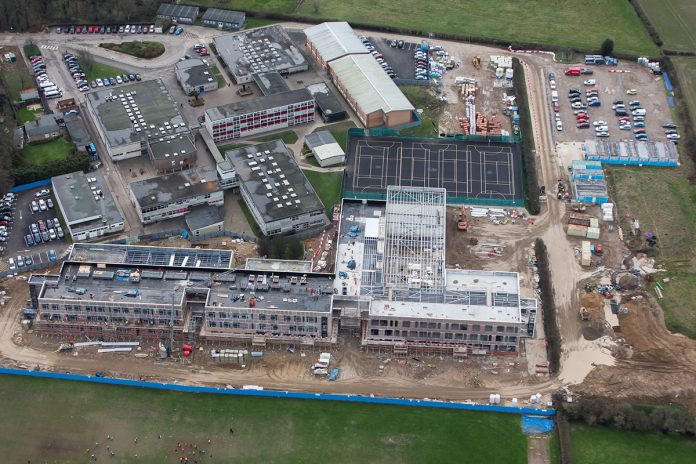On a recent £135m project to deliver seven schools simultaneously across Hertfordshire, Bedfordshire and Berkshire, Interserve explored what Powerproject’s companion app, Site Progress Mobile, could do to improve the collection, management and integration of progress updates
Managing a multi-site build is always a significant challenge, requiring the tightest of project management both individually, and in terms of oversight and co-ordination between projects. Interserve, one of the world’s foremost support services and construction companies, uses Powerproject planning software for that purpose on many of its projects.
Multi-site activities multiply at fit-out stage
As the project approached the fit-out stage, it was clear that the number of activities would increase exponentially and that tracking project progress in the critical final phase would become challenging. With seven schools of broadly similar configuration, size and shape, with fitout sometimes happening on multiple storeys or in separate classroom blocks, it was evident that tracking progress accurately through each location was imperative.
With a vast number of activities to manage across seven geographically separate sites, Peter Farmer, one of the Senior Planning Engineers at Interserve Construction’s Strategic Projects division was tasked with overseeing the project progress. Peter decided to use the Site Progress Mobile app to help track progress on the move and out on site.
Originally, Peter and his colleague would visit each site and walk around with a notepad – but this was a time-consuming exercise, not only because each school had to be tracked individually but also because of the time traveling between sites spanning Hemel Hempstead, Luton, Watford, Reading, Bishop’s Hatfield, Cheshunt, and Kings Langley.
“Before Site Progress Mobile, capturing progress updates was time consuming. By the time you had walked the site, gone top to bottom of the building, input the data into the programme, assessed progress achieved, and spoken to the construction team, it would take the best part of a day. Following that, we still had to format progress reports to be issued,” Peter explained that.
“With Site Progress Mobile, it took us between a third to a half of the original time.”
Eliminating the task of manually inputting progress updates into the programme, in addition to enabling faster collection of data itself, is the main benefit that Peter identified.
“The beauty of Site Progress Mobile is that the data collected with your phone can be downloaded directly into the programme. It removed a laborious task and the potential for errors from having to input data manually,” he said.

Creating new perspective on progress
Keeping tabs on progress means tracking all current activities, everywhere, constantly.
Peter is clear about the vital role of progress management, saying: “Progress management is essential. You must always know where each job is on the timeline. Often you will speak to a sub-contractor and they are unsure where their element is – so you need to find out for yourself. On this project, we implemented a location-based scheduling system. Each building was sub-divided into a number of locations. We could identify the status of individual tasks in each, helping us to build a very accurate picture of our position.”
“The beauty of Site Progress Mobile is that the data collected with your phone can be downloaded directly into the programme. It removed a laborious task and the potential for errors from having to input data manually.”
The mobile app helped Peter and his colleague to monitor every location.
“By walking around with Site Progress Mobile in front of us, we picked everything up and logged it. We downloaded the relevant segments of the programme to our mobile devices beforehand, so everything we needed to check was visible – we could then allocate progress accordingly. We used our judgement to decide percentages and were able to make comments and take photographs associated with programmed tasks,” he said.
Image overload
Taking lots of in-progress site photographs is the norm in construction, but these are often cumbersome to file, keep track of, and distribute – a problem that increases as the number of concurrent activities rises.
Peter was emphatic about the benefit in this area, commenting that: “Managing photographs used to be an absolute nightmare. On seven sites, we took a lot of pictures. Site Progress Mobile has made the data collection and collation associated with progress monitoring much more straightforward. The fact you can attach a photo directly to a relevant task or bar line and add comments to it is brilliant. It’s easy and simple to use, and it makes life easier. An instant visual record is available of the status of tasks at a particular point in time.”
In conclusion, Peter said “You have two choices for progress management on a project like this. You can have either all the activities printed out from the programme or on a spreadsheet, giving you numerous sides of text on A4 sheets for each site that you have to annotate – or, with Site Progress Mobile, you have it all on your mobile device.”
Jonathan Hunter
Chief Operating Officer
Elecosoft
Tel: +44 (0)1844 261700
Twitter: @astapmsoftware
Please note: this is a commercial profile.














